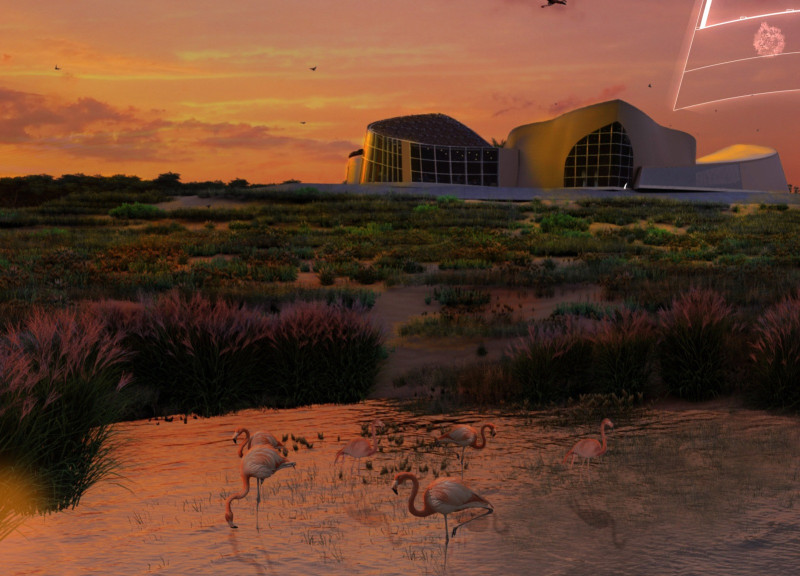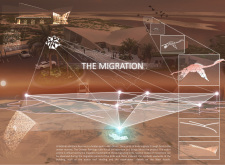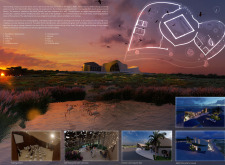5 key facts about this project
The Al Wathba Wetland Reserve in Abu Dhabi offers a thoughtful response to its natural environment, serving as an educational facility and visitor center. The design draws inspiration from the migratory patterns of the Greater flamingo, promoting a deep connection between the structure and the surrounding wetlands. The overall approach emphasizes harmony with nature while providing a space that invites exploration and learning.
Concept and Inspiration
The architecture reflects the graceful movements of migrating birds. Curved lines mimic the elegance of flamingos in flight, enhancing the building's visual appeal. This design not only serves aesthetic purposes; it also addresses environmental challenges such as strong winds and sandstorms. By using organic shapes, the building integrates smoothly into the landscape, promoting a sense of belonging in the wetland setting.
Functional Layout
Careful planning of spaces ensures that visitors remain engaged with the environment. The entrance, located on the North facade, features a protective wall that creates a welcoming experience. Within the building, the café has an upper mezzanine level, supported by a woven shading structure. This design allows for expansive views of the wetland, fostering a direct connection between the interior and exterior environments.
Interior Design and Atmosphere
The exhibition area is designed to make the most of natural light while maintaining a comfortable atmosphere. The slanting south facade allows light to filter through, reducing glare. Next to this space, the training room is arranged in a circular layout, encouraging flow and interaction. Hollow brick walls let in ambient light, producing a soft play of shadows that enhances the overall experience within the space.
Sustainable Design Elements
Smart shading techniques are integrated throughout the building, focusing on comfort and energy efficiency. Acacia wood is used for the roofing to provide shading, while the hollow bricks balance structural integrity with a light appearance. These choices reflect a commitment to sustainability and an understanding of the local ecological context.
The shape of the roof not only protects against the elements but also represents the natural arcs of the flamingo in flight, emphasizing the connection to the wetland environment. This design approach creates a space that is functional, educational, and connected to the surrounding landscape.





















































